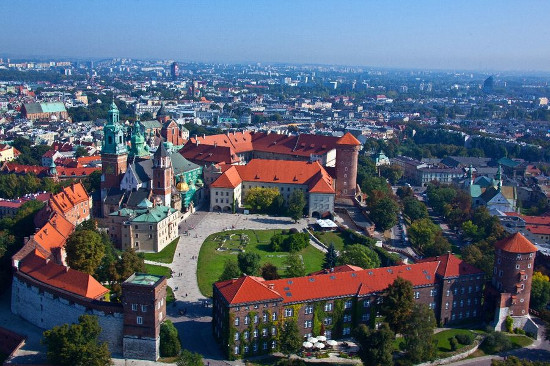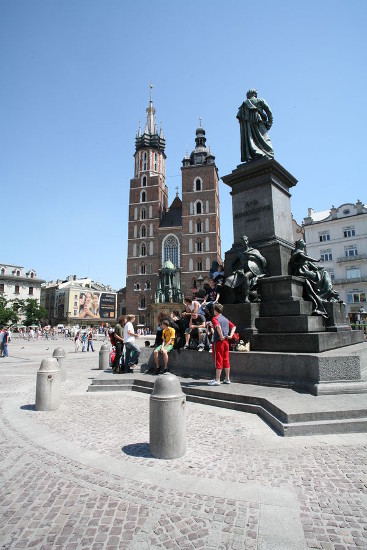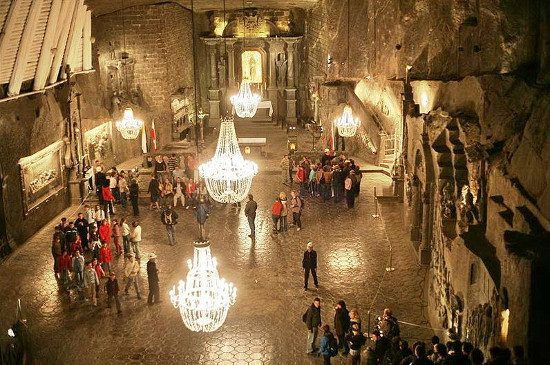Structure and Localization
Hotels
Recommended hotels:
Additionally, the following hotels are available near the conference venue:
About Kraków and the surrounding area
 The city of Krakow, which lies on the banks of the Vistula River, was for centuries the capital of Poland, and has accumulated a quarter of Poland’s total number of museum artefacts.
A visit to Krakow is a meeting with the most glorious era in Polish history. Krakow’s Old Town, along with Wawel Castle and the city’s Kazimierz district were placed on the First World Heritage List, created by UNESCO in 1978. At that time, such prestigious recognition had been awarded to only 12 of the world’s most famous heritage sites, including the Egyptian pyramids and the Great Wall of China. Today, the list contains more than 900 sites worldwide.
The city of Krakow, which lies on the banks of the Vistula River, was for centuries the capital of Poland, and has accumulated a quarter of Poland’s total number of museum artefacts.
A visit to Krakow is a meeting with the most glorious era in Polish history. Krakow’s Old Town, along with Wawel Castle and the city’s Kazimierz district were placed on the First World Heritage List, created by UNESCO in 1978. At that time, such prestigious recognition had been awarded to only 12 of the world’s most famous heritage sites, including the Egyptian pyramids and the Great Wall of China. Today, the list contains more than 900 sites worldwide.
 Wawel is a fortified architectural complex erected over many centuries atop a limestone outcrop on the left bank of the Vistula river in Kraków, Poland, at an altitude of 228 metres above sea level.
The complex consists of many buildings and fortifications; the largest and best known of these are the Royal Castle and the Wawel Cathedral (which is the Basilica of St Stanisław and St Wacław). Some of Wawel's oldest stone buildings, such as the Rotunda of the Virgin Mary can be dated to 970AD. There are also wooden parts of the complex which date to about the 9th century. The castle itself has been described as "one of the most fascinating of all European castles."
Wawel is a fortified architectural complex erected over many centuries atop a limestone outcrop on the left bank of the Vistula river in Kraków, Poland, at an altitude of 228 metres above sea level.
The complex consists of many buildings and fortifications; the largest and best known of these are the Royal Castle and the Wawel Cathedral (which is the Basilica of St Stanisław and St Wacław). Some of Wawel's oldest stone buildings, such as the Rotunda of the Virgin Mary can be dated to 970AD. There are also wooden parts of the complex which date to about the 9th century. The castle itself has been described as "one of the most fascinating of all European castles."
 St. Mary's Tower - also known as the Straży (Guard), Budzielna (Waking), Alarmowa (Alarm) and Hejnalica (Heynal) Tower – is the only tower in the world from which a trumpeter has played the Heynal (bugle call) to the four quarters of the globe every hour throughout the whole day for over six hundred years. In order to see and hear these marvels one has to climb 239 steps to the height of 54 metres. St. Mary’s trumpeter needs two and a half minutes. We do not have to hurry that much. What is most important is that up there we are expected by the always cordial heynal guards, the last magicians of Kraków.
Trumpets have played from the towers and gates of Kraków ‘forever’ announcing the beginning and end of day. Behind the walls the morning opening of the gates was awaited by the travellers met by the night near Kraków. How did these first melodies played from the defensive towers of the City and the Wawel Royal Castle sound like? This we will probably never know. All is known is that when at the end of the 14th century Kraków swarmed with Magyars (as Jadwiga, the future wife of Jagiełło, was to come to the throne), one of the barrels with delicious Hungarian wine brought us ‘hajnal’ from the Danube area. It came and stayed at the Kraków’s sky forever. At first it was probably played by Hungarians, and then – when the guard at Wawel and St. Mary’s Tower changed – also by Poles.
St. Mary's Tower - also known as the Straży (Guard), Budzielna (Waking), Alarmowa (Alarm) and Hejnalica (Heynal) Tower – is the only tower in the world from which a trumpeter has played the Heynal (bugle call) to the four quarters of the globe every hour throughout the whole day for over six hundred years. In order to see and hear these marvels one has to climb 239 steps to the height of 54 metres. St. Mary’s trumpeter needs two and a half minutes. We do not have to hurry that much. What is most important is that up there we are expected by the always cordial heynal guards, the last magicians of Kraków.
Trumpets have played from the towers and gates of Kraków ‘forever’ announcing the beginning and end of day. Behind the walls the morning opening of the gates was awaited by the travellers met by the night near Kraków. How did these first melodies played from the defensive towers of the City and the Wawel Royal Castle sound like? This we will probably never know. All is known is that when at the end of the 14th century Kraków swarmed with Magyars (as Jadwiga, the future wife of Jagiełło, was to come to the throne), one of the barrels with delicious Hungarian wine brought us ‘hajnal’ from the Danube area. It came and stayed at the Kraków’s sky forever. At first it was probably played by Hungarians, and then – when the guard at Wawel and St. Mary’s Tower changed – also by Poles.
 The “Wieliczka” Salt Mine is one of the most valuable monuments of material and spiritual culture in Poland. Each year it is visited by more than one million tourists from all over the world. It is also a world class monument, featuring among twelve objects on the UNESCO’s World Cultural and Natural Heritage List.
Today, the “Wieliczka” Salt Mine combines many centuries of tradition and modernity, the history of several hundred years and an underground metropolis with extensive infrastructure. The mine is a product of work of tens of generations of miners, a monument to the history of Poland and to the Polish nation – a brand, present in Polish consciousness for centuries.
The “Wieliczka” Salt Mine is one of the most valuable monuments of material and spiritual culture in Poland. Each year it is visited by more than one million tourists from all over the world. It is also a world class monument, featuring among twelve objects on the UNESCO’s World Cultural and Natural Heritage List.
Today, the “Wieliczka” Salt Mine combines many centuries of tradition and modernity, the history of several hundred years and an underground metropolis with extensive infrastructure. The mine is a product of work of tens of generations of miners, a monument to the history of Poland and to the Polish nation – a brand, present in Polish consciousness for centuries.
Photos from: www.krakow.pl




